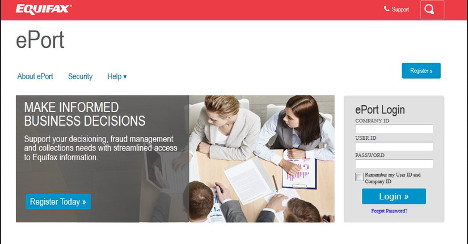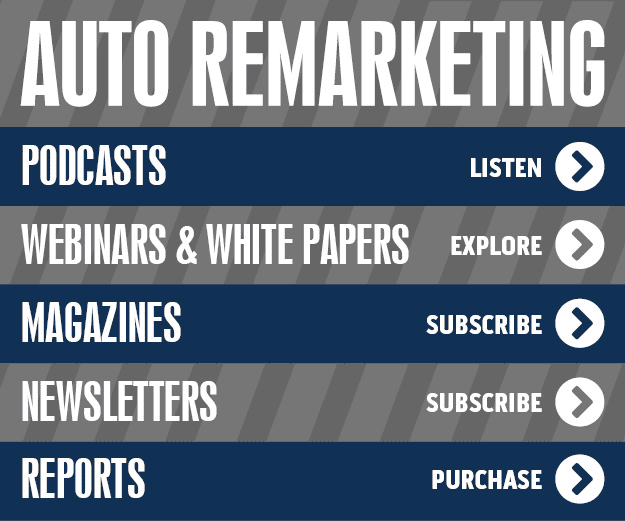Pelican Auto Finance is using what executives describe as a “crawl-walk-run approach” to growth in the deep subprime auto financing world. And they want to start running to the point where the company’s portfolio ranks among the top five institutions nationwide, blending together a business strategy of being an indirect lender for franchised and independent dealers to tap as well as a purchaser of paper from buy-here, pay-here operators.
“Right now we have significant capitalization behind us,” Pelican chief executive officer Troy Cavallaro told SubPrime Auto Finance News.
“I think a year from now we’re going to be well positioned to be one of the top four lenders in the deep subprime space,” Cavallaro continued. “I understand that Westlake’s portfolio is well over a $1 billion and Credit Acceptance’s portfolio is well over $1 billion. We don’t expect to get there in the next 12, 18 or 24 months. But we think we can position ourselves to be the No. 4 or No. 5 deep subprime lender in the nation. That’s our goal is to get there.”
To reach that goal, Pelican first had to complete that crawling stage. Cavallaro indicated that process entailed the licensing process, acquiring new physical facilities and collecting a group of senior managers and other personnel.
The walking stage included the building of a new scorecard. Cavallaro explained that new in-house proprietary scorecard was based on “rational analysis we did and making sure the static pools were in line” for the $50 million in receivables that came with the company’s predecessor, Pelican Resource Group.
Cavallaro then mentioned that late last year, Pelican Auto Finance closed a bank facility with an institution he called “a large national provider.” He noted that it’s a senior debt facility that has potential to expand to $50 million.
That facility coupled with the agreement Pelican Auto Finance reached with Flexpoint Ford last February on the option to invest up to $50 million is part of the reason why Cavallaro said, “We’re in a really prime position at this point to grow and make an impact nationwide.
“This year’s task is to run,” he added.
Pelican Auto Finance is already up and running in 24 states. Cavallaro noted that the company is making inroads into the Carolinas, Georgia and Texas from beyond its position of strength in the Northeast and Mid-Atlantic. Pelican Auto Finance plans to grow on the West Coast next year.
Cavallaro described Pelican Auto Finance’s core product as an indirect lending solution for deep subprime buyers who are purchasing vehicles that retail for $12,000 or less. The majority of the company’s dealer network consists of independent dealerships, but the level of franchised stores has risen from 10 percent to 20 percent during the past few months.
“What we’ve noticed is the fact that there are so many more franchises today that want to get involved in deep subprime,” Cavallaro said. “I’m seeing a trend that there are more franchises holding onto their better older wholesale pieces and using them to develop a subprime department to get a deeper reach. So that 8- or 9-year-old Honda Accord that they would wholesale out but it runs great, these dealers are now keeping that car and selling it to someone who is deep subprime and maybe generate some additional business through referrals or other opportunities.
“That’s pretty significant going from 10 percent to 20 percent as franchises,” he continued. “It’s being driven by the franchises becoming more educated and holding onto these better trades and not only selling more cars, but also generating more referrals, as well.”
Meanwhile, Pelican Auto Finance also is looking to expand what it considers an ancillary add-on part of its business strategy, purchasing paper from BHPH dealerships. Cavallaro also shared how the company is approaching this segment.
“I would say there are two categories of BHPH transactions. There is the bulk purchase we’re all familiar with. Then there is another type of thing called a BHPH partner relationship,” Cavallaro said. “The difference is you have some of the bigger BHPH outfits that amass these portfolios and sometimes, they’re $500,000 or $1 million or $2 million, and they want to sell them in one lump sum. That’s what I would classify as a bulk purchase.
“That’s not really where we want to go,” he continued. “A lot of lenders, they go after those portfolios, and that’s a lot of their core business. We look it at it as that’s not a sustainable model in terms of continual growth. These larger players in the bulk purchase model are selling maybe once a quarter or semiannually or annually. They’re really just selling to the highest bidder. But there’s not a real relationship there.
“What we’re really focused on is the BHPH dealers that want to develop a relationship and instead of selling large masses, selling to us on a regular basis, be it monthly or bimonthly,” he went on to say. “It’s a different type of relationship. We’re looking for a different segment of that BHPH dealer business.”
Equifax recently signed an agreement with the National Independent Automotive Dealers Association to be a National Member Benefit Partner.
Through this relationship, Equifax will provide NIADA-member dealers access to the next generation of tools and information to help them deliver vehicles including its recently upgraded online portal focused on improving a dealer’s ability to facilitate their used vehicle sales.
The online portal, Equifax ePort, can provide independent dealers access to shoppers’ credit data as well as verification of income and employment to remove lender stipulations, mitigate fraud and ultimately, speed the delivery of used vehicles.
Equifax ePort also can enable simple and more secure access to the daily data and information that dealerships need to work more efficiently with both consumers and lenders.
NIADA and Equifax recently began working together to identify the common pain points independent dealers face. Through this collaboration, both organizations believe they will be more strongly positioned to better help independent dealers overcome some of the identified challenges by providing information in one easy-to-access portal.
As a result, dealers are able to:
—Clear stipulations quickly with instant access to income and employment verifications
—Access multiple credit scores to work more effectively and efficiently with lenders
—Streamline fraud checks and similar verifications to stay focused on selling
—Help provide an auditable and documented process for interactions with consumers and lenders
“Equifax ePort is a revolutionary approach to solving headaches frequently encountered by our member dealers,” said Scott Lilja, senior vice president of member services at NIADA. “Our members can now streamline the delivery process and drive sales by leveraging a single source for consumer information. We are excited to work with Equifax, and together, we aim to continue improving the quality of solutions available for independent dealers now and in the future.”
Gary Hughes, general manager of automotive services at Equifax added, “Over the years, Equifax has been a trusted resource for providing consumer credit information to auto dealers to help them make more informed decisions during the vehicle sales process.
“Now, with the enhanced capabilities of our Equifax ePort platform for dealers, we will be able to offer even more solutions to the auto market,” Hughes went on to say. “We are pleased to join with NIADA to better empower independent dealers as they continue to grow their business and navigate the road ahead.”
Equifax will be unveiling its upgraded capabilities for independent dealers at the annual NIADA Convention & Expo beginning on Jun 23 in Las Vegas.
Remember 2005? That’s when the BlackBerry was the smartphone of choice, and the Federal Reserve pushed the short-term interest rate to 3 percent, marking the eighth increase in less than a year. That year also was the last time this much paper and metal was on the street.
The latest Equifax National Consumer Credit Trends Report showed the total balance of outstanding auto loans in March rose 10.3 percent from the same time a year ago to $874 billion.
Furthermore, the total number of loans outstanding is 6.1 percent higher year-over-year, as 63 million contracts are filling finance company portfolios.
Both metrics are at nine-year highs, which is “great news,” according to Jennifer Reid, the senior director of product marketing at Equifax Automotive Services.
“All in all, it’s very positive just to get back there,” Reid said during a phone interview with SubPrime Auto Finance News this week. “I joke because you talk to people who live month-to-month within the car business and you start to think, ‘Wow, it took us nine years to get back here.’ I hope we don’t forget that it took us nine years to get back.
“The big question now is have we learned from some of the things that got us to where we were five years ago? As long as we continue to keep these healthy trends of growth, we’re buying loans smart. Dealers are taking care of the customer, really focusing on that customer experience to build their businesses. I think it’s going to be a wave we’re going to continue to ride,” Reid continued.
Equifax’s data also showed the total number of vehicle loans originated in January came in at 1.8 million, an eight-year high and an increase of 4.7 percent year-over-year.
And with a greater volume of contracts associated with terms lasting 60 to 72 months, Reid suspects that the levels of outstanding contracts and balances likely will stay at current levels — or possibly rise.
“It speaks to the fact that money is being lent,” Reid said. “I think when you start to see those longer terms, traditionally you’re seeing customers get into a little more vehicle. The payments haven’t necessarily drastically dropped but some of the ticket prices have crept up. The good news is the vehicles from a technology standpoint are better than they ever have been.”
Meanwhile, Equifax is seeing delinquencies and write-offs drifting upward slightly but not at a significant rate. Reid pointed out how watching these trends also is considerably different than nine years ago when the amount of outstanding loans was this high.
“Lenders have more tools than they ever have had,” Reid said. “Just think about nine or 10 years ago and how far the Internet has come. That digital era is in the making right now. Now, I think the lenders can get more aggressive and still be smart about it. They have a lot more warning behind them. All the way around, we’re just more educated. I think we’re much more seasoned now having gone through the last five, six years.”
So when should an alarm sound, prompting a tightening of underwriting or a general pull-back in originations? Reid contends it varies on the strategy a finance company has.
“It really depends on your model. Too much for a prime lender might not be for a subprime lender who takes on quite a bit of risk,” Reid said. “I think right now the focus is — and it’s always a healthy discussion — what is the right level of risk. I think it’s more important to understand what risk you are taking. Because at a time when delinquency numbers start trending upward, it’s very tough to mitigate that. You can control the kind of paper you put on, but it’s really tough to control the paper you have. So you want to stay proactive and ahead of that. I think it’s OK to take on some extra risk, and we’re seeing that with some of the subprime paper, but lenders really need to make sure it fits their model.”
Not every single General Motors franchised dealership uses Ally Financial to cover floor plan needs. While company executives say they're working to improve penetration levels, Ally leadership says it’s focused on another metric that shows the solid performance the company owns, stemming from its commercial department.
Jeffrey Brown, president and chief executive officer of Ally Dealer Financial Services, explained his thinking when Ally conducted its quarterly conference call as the company reported its first-quarter financial statement.
“Our floor plan has continued to have strong growth in average balances, which is really the metric we tend to focus on more than penetration levels. Obviously we’ve experienced very high penetrations with GM dealers and Chrysler dealers. It’s really their independent decision to make,” said Brown, who took over the lead of Ally’s dealer business in March.
“The key value proposition is what we go out and sell every day, which is being the one-stop shop, being the preferred lender, being the whole provider. Really no other competitor that we face can offer every product that we can — retail new, retail used, leasing, insurance and floor plans,” he continued.
“For us, it’s really the strength of our product offering and being able to do it on a nationwide scale. We are in all 50 states. Historically, that’s the way we’ve been able to maintain such strong levels and capture the type of dealer relationships we do,” Brown went on to say.
Ally reported that it had $33 billion in outstanding commercial notes as of the close of the first quarter. That amount is 1.1 percent higher than a year earlier.
The company reached that level even though Ally’s penetration levels with GM and Chrysler dealers sagged a bit in Q1. The penetration level with GM stores stood at 64.1 percent, down from 68.6 percent a year ago. The penetration percentage for Chrysler dealerships came in at 46.4 percent, off from 53.9 percent after the first quarter of last year.
Brown described the competition Ally is facing and how it’s growing the portfolio despite the penetration levels being a bit off.
“What we’ve been saying for the past three or four years is that it’s not really about a contract. Really the relations start at the dealer. For us, it’s been a lot of hand-to-hand combat over the last three or four years, but we’ve made progress, really selling those dealer capabilities, selling the partnerships, selling the platform,” Brown said.
After Brown shared his thoughts about the company’s commercial business, Ally CEO Michael Carpenter took his turn to summarize this part of the business.
“The commercial business from one perspective is a very straightforward business, and from another perspective it’s not,” Carpenter said. “It’s a business that not a lot of people can do, and certainly not a lot of people can do it with risk management. It’s a business that requires significant expertise and substantial infrastructure. The fact that we have an organization that can get into these dealerships every day and know what’s going on in their business has a lot to do with it.
“From the dealer’s point of view, this is the lifeblood of their business,” he continued. “Without having a good floor plan relationship, they could lose their franchise. They are all very well aware that in 2008, all these banks that today think this is the greatest business since sliced bread decided that they needed to shrink their balance sheets during the financial crisis. And the easiest and quickest way to shrink the balance sheet was to walk away from all of these dealers.”
Carpenter made a few more points before closing the topic.
“I would also add that switching is not easy. We are so embedded in the relationship,” he said. “When you look at these numbers, $33 billion, if you talk with J.P. Morgan, Wells Fargo, Santander, Capital One and added them all together, they don’t add up to our size in this business. Yes, we’ve lost some share over time, but frankly, I wouldn’t mind a few more businesses where we have 60 percent market share.
“It’s a very solid, very defensible from a competitive sense,” Carpenter went on to say.
April’s used-vehicle sales numbers backed up assertions that the economy is generally on a positive path and finance companies can leverage the situation into profits down the road.
According to CNW Research, used-vehicle sales in April to deep subprime buyers — customers with FICO scores below 500 — jumped by 19 percent year-over-year and climbed 24.5 percent versus March.
The number of used cars sold by franchised and independent dealers in April, plus those included in private-party sales, came out to 3.96 million last month, CNW said.
This compares to 3.82 million in April 2012. Through four months, there have been 11.44 million used vehicles sold, up from 11.26 million in the same period of 2013.
Franchised dealers sold 1.41 million used cars in April (up 4.7 percent), independents moved 1.28 million (up 3.95 percent) and casual sales increased 2.21 percent at 1.26 million.
In his Retail Automotive Summary published before the April used-vehicle sales tallies, CNW president Art Spinella noted the firm’s Jitters Index improved slightly.
“Americans are still worried about much of their home-centric economic condition, but there was a slight easing of those concerns versus both a year ago and (February),” said Spinella, noting both readings showed an identical 0.7 percent decline.
“Hardly upbeat, at least it’s a move in the right direction,” he continued. “To put it into historical perspective, though, the March index registered a 7.66. In January 2007, it was at 3.84. For most of the 1990s, the index hovered between 4 and 5.
Earlier last month when the company reported its first-quarter financial performance, Consumer Portfolio Services chairman and chief executive officer Brad Bradley explained how rising consumer confidence coupled with another industry factor is helping companies that specialize in financing subprime buyers.
“Looking at the economy, I think consumer confidence is finally edging up to where it’s probably helping. The biggie for us and certainly for lots of folks is that the rates are so low. I would say the rates are going up bit they just don’t seem to be going anywhere,” Bradley said.
“So for a company like CPS to have those rates sit here where we can generate large amounts of paper and continue to build our portfolio locked in those long-term rates and have them to be very low, really helps in terms of both generating cash flow and also in locking long-term profits,” he continued.
Manheim chief economist Tom Webb offered more commentary that might indicate sales prospects might be upbeat beyond the typical spring market.
“First-quarter earnings reports suggest the economy might be setting up for acceleration in the months ahead,” Webb said in Manheim’s latest Auto Industry Brief. “Evidence came not in the numbers (they were too distorted by the weather), but in the commentary and future guidance.
“Banks, for example, had only mediocre results (due to weakness in the mortgage market and investment banking); but most reported a pickup in commercial loans to small and midsize businesses,” he continued. “Economists have been arguing in recent years whether weak business lending was the result of low demand or the reluctance of banks to lend. Maybe now we can put aside the academic argument and simply enjoy the ensuing benefits.
“With labor markets improving (but still far from healthy) and inflation below both targets and expectations, there is no doubt that the monetary punchbowl will remain full way beyond the ability of all guests to consume,” Webb went on to say. “This year’s long rave may not end nicely, but it won’t end in 2014.”
Turning back to last month’s used-vehicle sales performance, Spinella gave some overarching analysis on April’s used-car market in his report released Friday.
“The Internet continues to drive traffic to used car sellers at the expense of newspapers,” he said. “In April, the number of shoppers went to a dealership because of something seen on the Internet jumped 116 percent versus a year ago and nearly 28 percent versus March of this year.
“Newspapers, on the other hand, saw a decline in the number of consumers who say they were driven to a dealership by print newspapers — down 16 percent versus a year ago.”
Spinella went on to note: “More consumers are shopping franchised dealerships for a used car or truck versus March of this year (up 46.5 percent), but off somewhat vs. year ago (down 4.5 percent). For independent dealers, the comparable percentage changes are up 22 percent (versus last month) and down 22 percent (versus last year).”
Staff writer Joe Overby contributed to this report.
Credit Acceptance chief executive officer Brett Roberts acknowledged just how much the competitive landscape finance companies are finding to book subprime contracts impacted the company’s first-quarter performance.
While the company’s consumer loan unit volume and active dealer figures both jumped by double digits year-over-year, Credit Acceptance reported that its consolidated net income softened in Q1.
The first-quarter consolidated net income level settled at $49.8 million, or $2.12 per diluted share, for the period that ended March 31. During the previous year’s quarter, Credit Acceptance’s consolidated net income came in at $60.6 million, or $2.48 per diluted share.
Officials indicated first-quarter adjusted net income, a non-GAAP financial measure, totaled $63.4 million, or $2.69 per diluted share, which ended up higher compared to $58.8 million, or $2.41 per diluted share, for the same period in 2013.
Credit Acceptance reported that Q1 consumer loan unit volume rose 14.3 percent year-over-year to 65,283 contracts, up from 57,105 deals a year earlier.
The company’s active dealer network climbed by 16.1 percent to 5,058. At the close of the first quarter of last year, the network level stood at 4,355.
During this week’s conference call with investment analysts, Roberts summarized Credit Acceptance’s current situation in light of what he thinks might happen going forward.
“The competitive environment continues to be challenging,” he said. “We probably won't see a change there until the sources of capital dry up for the subprime auto finance industry. I think the best measure of the competitive environment is our volume and more specifically our loan volume per dealer and that continues to decline but it's declining at a slower rate which is allowing us to grow originations a little bit faster than we had in prior quarters.
“In terms of the spread, we haven’t made any material pricing changes since the third quarter of 2012, so any change you see in the spread is a result of probably a couple of things,” Roberts continued. One would just be a change in the mix of loans, and the second thing you have to be aware of is that historically, at least for the most recent periods, we have seen an increase in forecasted collections after the loans were originally booked so the actual performance of the loans has exceeded our expectations when we wrote the loans. So if that continues to be the case, the spread that we reported for 2014 originations would climb in future periods.
“That’s just something to keep an eye on as you’re comparing the more recent loans with more seasoned loans,” he went on to say.
Roberts also touched on where this industry competition is originating.
“Most of the competition is from the traditional discount model. The big players all use the traditional discount model. There are a few players out there that have a program that looks something like ours but most of the big players are your traditional discount lenders,” he said.
Beyond the industry competition Roberts discussed, Credit Acceptance also mentioned three other factors that resulted in its first-quarter decrease in economic profit. Those negative impacts included:
• A decrease in its adjusted return on capital of 120 basis points primarily as a result of a decline in the yield on its loan portfolio due to higher advance rates on new consumer loan assignments.
• An increase in its cost of capital of 20 basis points primarily due to an increase in the average 30 year treasury rate, which is used in the average cost of equity calculation.
• An increase in adjusted average capital of 15.7 percent due to growth in our loan portfolio primarily as a result of growth in new consumer loan assignments in recent years, which resulted in the dollar volume of new consumer loan assignments exceeding the principal collected on our loan portfolio. The growth in new consumer loan assignments in recent years was the result of an increase in active dealers, partially offset by a decline in volume per active dealer.
Wall Street observers also sought an update on how Credit Acceptance is handling regulatory issues, specifically in light of the Consumer Financial Protection Bureau connecting disparate impact to discrimination issues in the auto finance sector.
“With respect to that specific issue, obviously that is the No. 1 issue in the auto finance space as it relates to the CFPB,” Roberts said. “It’s got everyone’s attention and like everybody else we're working through those issues.
Charlie Pearce, who is our chief legal officer, is on the board of the industry association. He’s dialed into the latest updates, in terms of the CFPB’s position on that issue, so we’re working through that issue like everybody else,” Roberts went on to say.
Financial services technology solutions provider Fiserv announced that World Omni Financial Corp., a provider of financial products and services to dealers, consumers and lenders, has deployed the Automotive Loan Origination System from Fiserv for its retail installment contract and lease origination technology needs.
With Auto LOS from Fiserv, officials said World Omni will be able to automate the entire credit and funding process from electronic application capture through efficient credit decisioning, funding verification, contract package validation and boarding to any auto servicing system.
Working with Fiserv, World Omni successfully migrated portfolios for Southeast Toyota Finance and Volvo Car Financial Services, among others, into Auto LOS version 5.0 over a 21-month period. The company indicated credit applications now flow seamlessly from automotive dealers’ credit management systems into Auto LOS.
“Our effective relationships with a diverse set of suppliers have allowed us to enhance our products, foster new and innovative ideas and identify ways to improve business practices,” said Mike Tiufekchiev, group vice president of originations at World Omni.
“Over the last two years, Fiserv has proved to be a great partner. Their commitment, support and training ensured a successful transition from an earlier version of Auto LOS,” Tiufekchiev continued.
Fiserv emphasized Auto LOS can increase productivity and lowers costs through streamlined loan decisioning and funding. A configurable embedded rules engine can empower lenders to price credit at the deal level, assures a fast and efficient origination process and improves a lender’s relationship position with its dealers.
World Omni also uses Biller Solutions from Fiserv to offer its customers a wide range of invoice delivery and payment choices, and improve the efficiency of payment processing.
“The combined Credit and Funding modules of Auto LOS deployed by World Omni will significantly enhance its loan origination and credit processing capabilities, both qualitatively and quantitatively,” said Kevin Collins, president of lending solutions at Fiserv.
“Forward-thinking companies like World Omni are leveraging technology not only to automate and integrate the various processes in the loan origination and servicing lifecycle, but also to be in the best possible position to benefit from the ongoing growth in the retail car market in the U.S.,” Collins went on to say.
The Automotive Loan Origination System from Fiserv is a comprehensive end-to-end solution for every step of the lending process. The Fiserv technology can give lenders tools that help them understand and view their entire lending portfolio more holistically, enabling them to make more informed decisions.
With a new website at its disposal, CashCall Auto is looking to grow its portfolio above the $6 million mark that the company needed only a few months to reach.
CashCall Auto vice president of loan servicing Louis Ochoa explained each dealership in the company’s network is assigned its own sales, credit and funding staff that can be personally reached to handle the store financing needs
“Our focus is on consistency, fast funding and bringing back the personal touch to auto financing” Ochoa said. “The larger traditional lenders by design are difficult to get on the phone, our dealerships are pleasantly surprised to find out that we are here seven days week and available when they are open for business.
“Our funding process is the fastest in the business,” he continued. Completed loan packages are able to fund as quickly as the same day they are received. This is the kind of personalized and fast service that distinguishes CashCall Auto from its competitors.
“In addition there is much more consistency, dealerships can count on us to purchase the same type of loans, month after month without the large fluctuations as seen with other lenders because, they are now scaling back after buying deeper than normal,” Ochoa went on to say.
“Within the next several months, we’ll be looking to expand into additional states. We will also partner with our preferred dealerships to lend directly to consumers,” he added.
For more information about CashCall Auto visit www.cashcallauto.com or call (855) 973-2886.
This month’s projected new-vehicle sales activity is likely to push lenders’ portfolio total higher — along with elongated terms connected with those contracts.
J.D. Power estimated that consumers will spend $33.5 billion purchasing new vehicles this month, a historic record level for the month of April. The previous April high was $30.5 billion in 2005.
“The April 2014 consumer spending reflects a combination of record average transaction prices — which, at nearly $29,800, surpasses the previous April high of $28,754 in 2013 — and strong retail sales volume,” said John Humphrey, senior vice president of the global automotive practice at J.D. Power.
J.D. Power’s data shows changes in who is buying new vehicles and how they are paying for them.
Buyers 35 years of age and younger are expected to account for 25 percent of new-vehicle retail sales in April, marking a rebound to pre-recession levels.
Additionally, J.D. Power indicated nearly one-third of new vehicles sold in April will be financed with a loan of 72 months or longer, with younger buyers in particular using the longer term loans to manage their monthly payments.
“Among buyers who are 35-years old and younger, 44 percent opt for 72-month or longer loans, while only 25 percent of those who are 55 years and older use an extended loan term,” Humphrey said.
J.D. Power projected that retail light-vehicle sales in April are expected to come in at 1.1 million units, 5 percent higher than in April of last year.
The seasonally adjusted annualized selling rate (SAAR) is expected to be 13.3 million units, more than 700,000 units higher than a year ago, according to J.D. Power.
Meanwhile, Edmunds.com is anticipating a robust new-vehicle sales performance for April.
Edmunds.com predicted that that 1,401,606 new cars and trucks will be sold in the U.S. in April for an estimated SAAR of 16.2 million. The projected sales will be an 8.7 percent decrease from March, but a 9.1 percent increase from April of last year.
The site’s forecast anticipates that the auto industry will enjoy its best April performance since franchised dealers sold 1,444,587 vehicles in April 2006.
“April’s numbers suggest that car shoppers are still motivated to buy new cars, erasing any doubts raised by lackluster sales at the beginning of the year,” Edmunds.com senior analyst Jessica Caldwell said. “The sales performance the last two months is more in line with what we projected for 2014, and there’s every reason to believe that car shoppers will continue to keep this pace.”
Subprime auto finance company GO Financial completed the sale of a substantial equity interest in GO Financial to Manheim today, furthering connecting the dealer-support efforts of GO Financial and NextGear Capital.
GO Financial is now majority owned by DriveTime chairman Ernie Garcia and DriveTime president and chief executive officer Ray Fidel and minority owned by Manheim. NextGear Capital still is wholly owned by Manheim.
Officials explained Manheim’s investment in GO Financial is intended to allow NextGear Capital and GO Financial to provide their dealers with fast and easy inventory financing and sales financing for subprime buyers.
Combining extensive industry experience, dealer relationships and access to capital and technology resources, the company highlighted the new relationship can allow GO Financial and NextGear Capital to be the inventory and sales financing sources of choice for independent dealers.
By the end of the year, NextGear Capital and GO Financial will complete the roll-out of the GO Financial subprime financing program to NextGear Capital’s dealers across the country.
Participating dealers can benefit from the faster funding and sharing of cash flows in the GO Financial program and benefit from increases in availability of inventory financing with NextGear Capital.
Furthermore, the companies mentioned technology innovations already being developed are designed to make the financing provided by NextGear Capital and GO Financial seamless and convenient for participating dealers.
“With strong partners in Manheim and NextGear Capital, GO Financial will deliver superior financing products and services to more dealers, allowing GO Financial to grow rapidly,” Garcia said.
“Inventory financing and sales financing are very competitive today, so dealers expect speed, convenience, innovation and value from their financing sources. GO Financial and NextGear Capital will team up to exceed dealers’ expectations,” Garcia continued.
Manheim’s agreement to purchase an interest in GO Financial was announced in February. The transaction closed on March 31. Terms of the transaction were not disclosed.
“This partnership supports NextGear Capital’s commitment to provide dealers with the tools they need to compete, to win and to grow,” Manheim Financial Services group vice president Patrick Brennan said.
“Everyone knows subprime customers are a large and profitable portion of the retail sales market,” Brennan continued. “By joining forces with GO Financial, an experienced subprime finance company, NextGear Capital now provides fast, easy and consistent financing for dealer’s purchase of inventory through the retail sale of each vehicle.”












